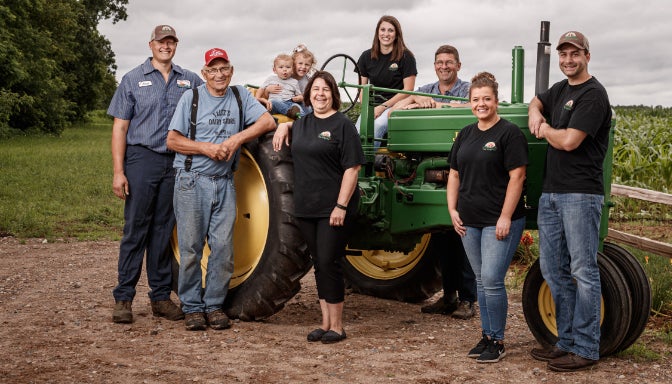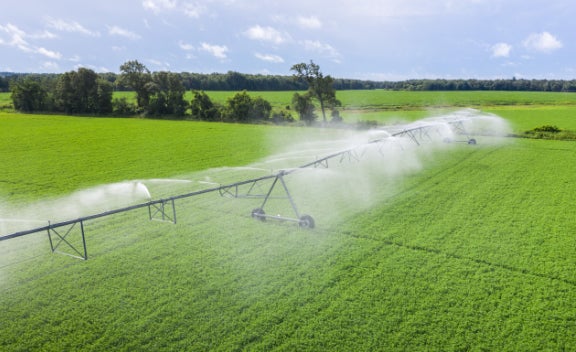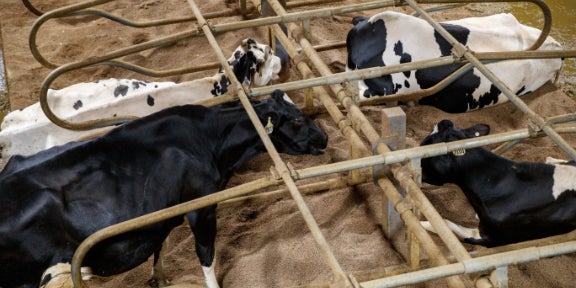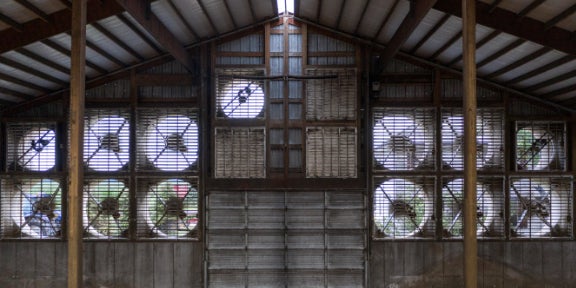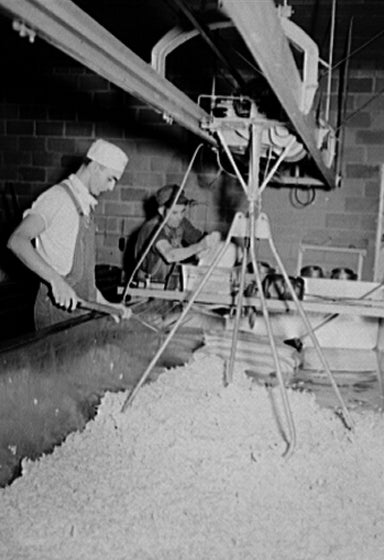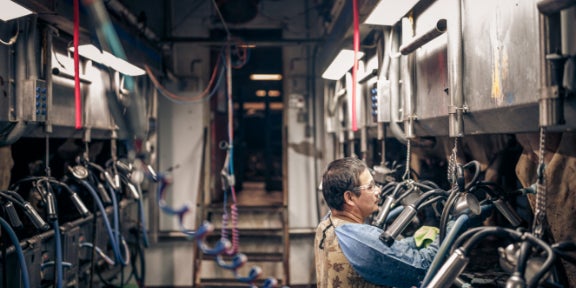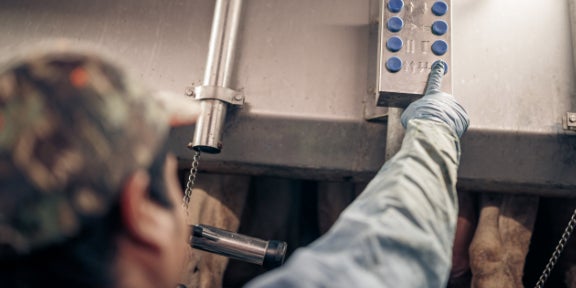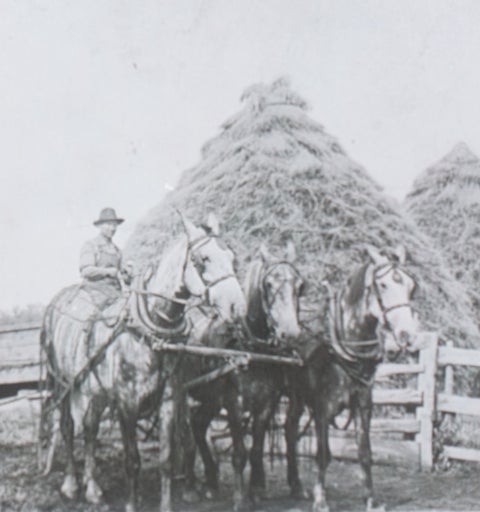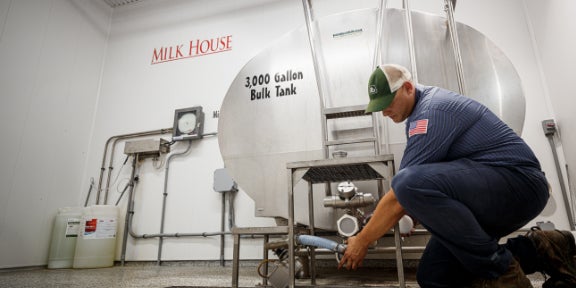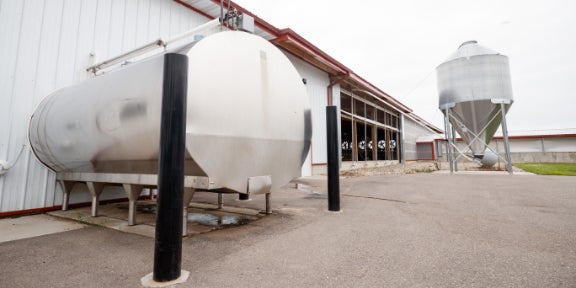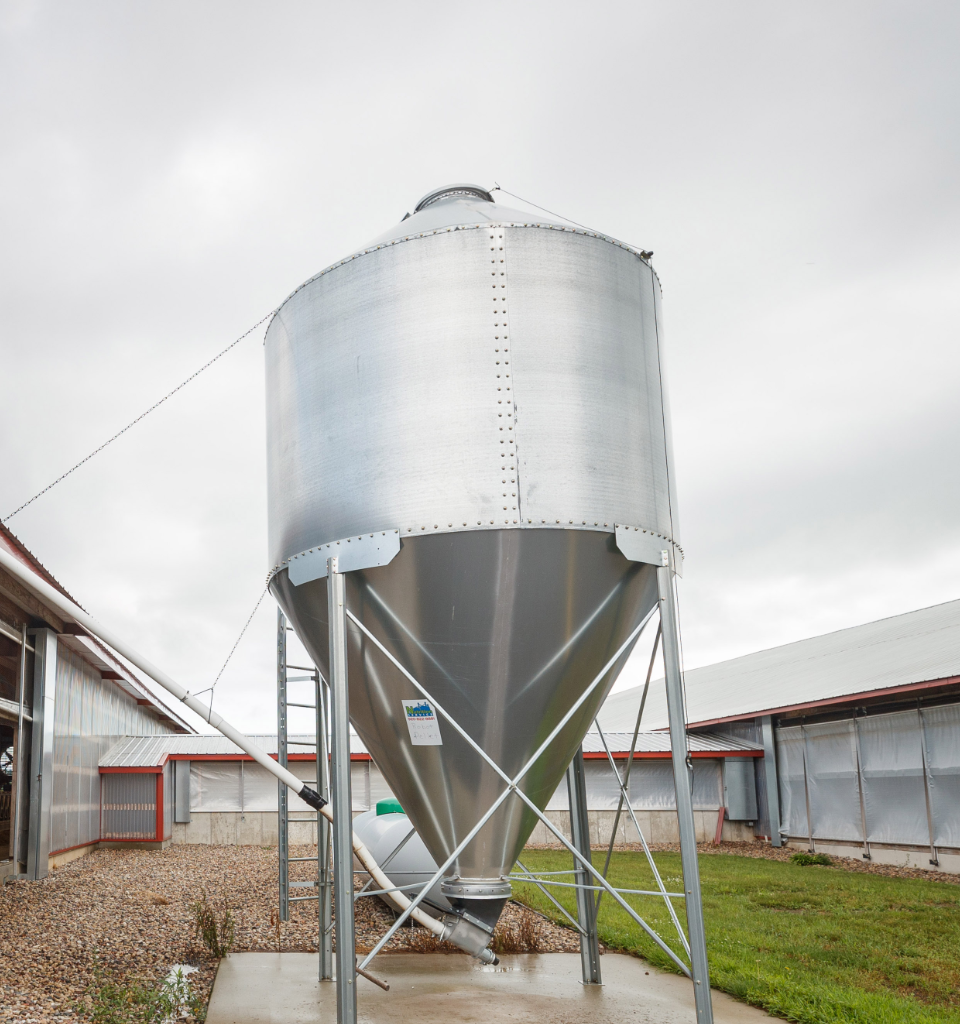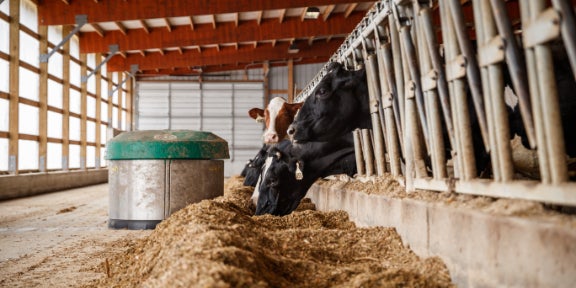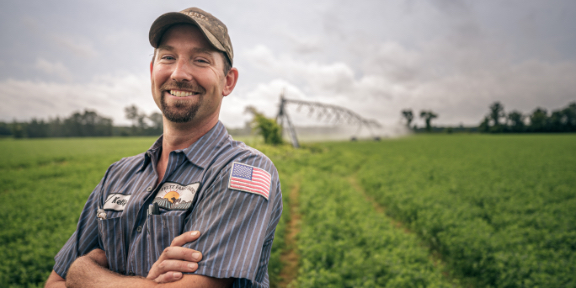Do you know where your food comes from?
How Farming Technology Has Changed Family Farms
Think back to the last meal you ate. Where did your food come from? Whether you enjoyed a plate of sizzling eggs and bacon, a crisp, fresh salad or a hot and juicy cheeseburger, the answer is the same: a farm.
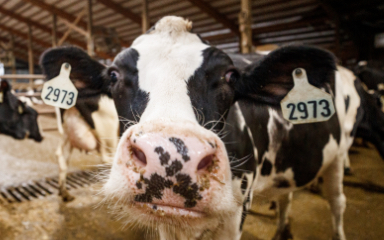
Farmers, like Ken and Jackie Feltz of Stevens Point, Wisconsin, work hard to maintain our food supply. A lot goes into running a farm, and a lot has changed since the Feltz dairy farm was established in 1915, especially when it comes to farming technology.
Keep scrolling to explore a century of farming and learn just how much has changed in farming technology. You won’t believe how far we’ve come!
1920s
Safe, Delicious Milk Started
With Wisconsin Regulations
A focus on quality dairy started in Wisconsin. In the 1920s, Wisconsin became the first state to grade cheese and create rules for food safety, ensuring clean milk was being sold.
Today, the Feltz family knows that clean, quality milk starts with healthy, stress-free cows. Their cow barn is cooled by large fans, and the floor is covered in comfortable, cushy beach sand. When temperatures creep above 76 degrees, their cows enjoy cool and refreshing showers. Next time you’re spending a hot day basking in the breeze of a cool fan or lounging in the sand at the beach, think about the dairy cows that might be doing the same thing!
A farmer milks a cow by hand, c. 1941.[2]
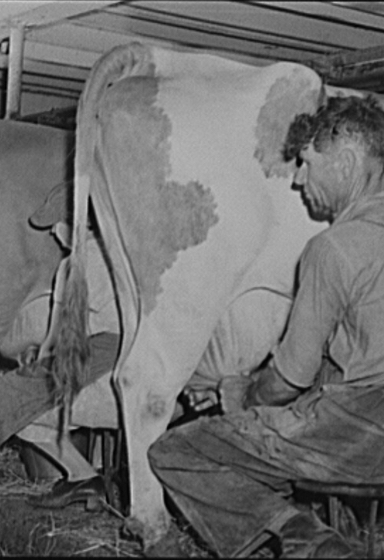
1923
Milking Cows Becomes
Way Easier
Imagine waking up before the sun rises and heading to the barn. You pull a small stool up to a cow, sit down and start milking. The cow swats her tail at a fly and narrowly misses your face. She takes a step to the side, right onto your foot. Depending on how quickly you work, you might finish milking this cow in ten minutes or twenty before moving onto the next cow and the next and next …
Milking a herd of cows by hand isn’t quick or easy. That’s why in 1923, the debut of the Surge Milker milking machine was a game-changer for many farmers. The Feltz family purchased their first milking machine after electricity came to the farm in the 1940s. As farming technology has progressed over the years, the family has continued to upgrade its milking machines, so they’re able to milk multiple cows at once with minimal labor.
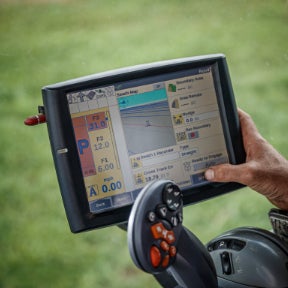
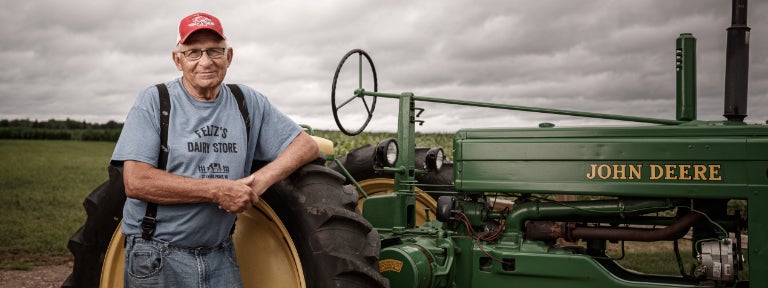
1924
Horses Head
Into Retirement
When Peter and Anastasia Feltz first established their family farm, it stretched across 120 acres. The family couldn’t plow, till and cultivate that much land on their own, so they used a team of eight horses to help work the fields. Caring for a team of horses is work, too, so the family eventually purchased a tractor. While the Feltz’s first tractor was a John Deere H, the most popular early tractor was the Farmall, which debuted in 1924. It was the first general purpose tractor, and it put a lot of horses out of work.
Today, the Feltz’s tractor is loaded with technology. The tractor’s GPS system allows the family to drive it hands free. The GPS also ensures that the field is planted in straight rows and prevents any rows from accidentally being fertilized more than once, saving the family on fuel and fertilizer.
A farmer carries a milk can, c. 1942.[3]
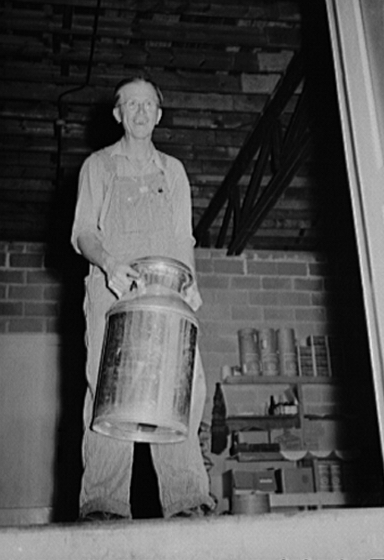
1948
No More Lifting
Heavy Milk Cans
Today, the average cow produces over 23,000 pounds of milk in a year, or over 65 pounds per day. Thanks to advancements in nutrition and selective breeding, that’s more than double the amount of milk that cows produced 50 years ago.
Of course, once a cow is milked, the milk has to go somewhere. Before 1948, that meant farmers like the Feltz’s were filling milk cans — which could weigh 110 pounds each — and lugging them to a storage area, then loading them onto a truck once it was time for delivery. This practice came to an end when A. C. Fisher invented a system of bulk milk tanks. When the Feltz family installed a bulk tank system in the late 1950s, they were freed from the time consuming and backbreaking work of hauling milk cans.
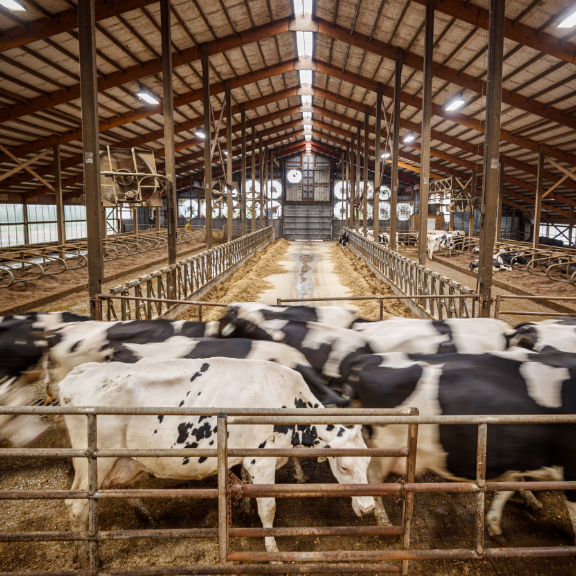
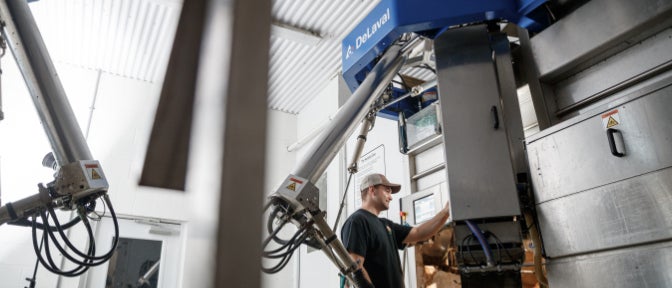
1990s
Cows Milk Themselves
(Sort of)
Milking machines have come a long way since the Surge Milker. In the 1990s, automatic milking parlors became available. Today, the Feltz farm has a climate-controlled automatic milking facility that allows cows to practically milk themselves.
Cows are free to enter the robotic milking facility whenever they’d like. When a cow craves a tasty snack, like cherry-flavored food pellets, she makes her way to the facility. Here, the machine reads a tag she’s wearing, so it knows who the cow is and can keep track of how much milk she produces. Robotic technology connects the milking apparatus to the cow’s udder. Seven minutes later, she’s done being milked. The robotic milking facility frees up time for the Feltz family to focus on other work on the farm.
Jake Feltz uses a tablet to monitor crops.

Today
More Farming Technology
Emerges Every Day
Progress has always been part of farming, whether farmers are adapting to changing weather or consumer demands. It’s not surprising then that farming technology has continuously progressed, too, and it’s showing no signs of stopping.
Some of the latest technologies include automated irrigation that uses water more efficiently, laser scarecrows that prevent pests from destroying crops, and soil DNA testing that give farmers more transparency about their farmland.
Scientists and engineers are working on even more technologies to improve agriculture, like creating vertical farms and producing self-driving tractors to save time and money. With all this innovation, it’s impossible to predict exactly where farming technology will take us in the future.
